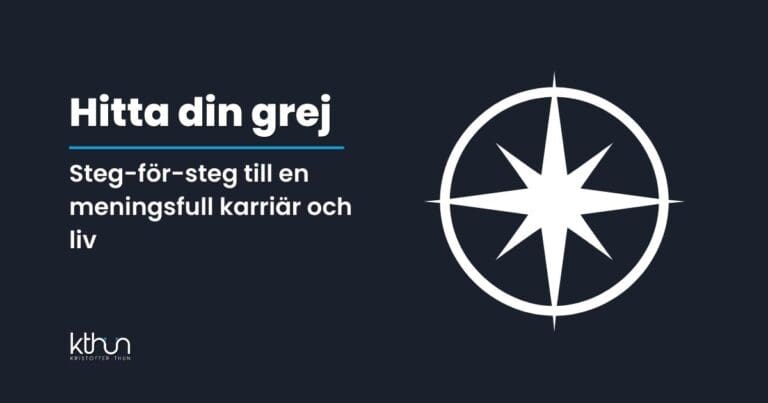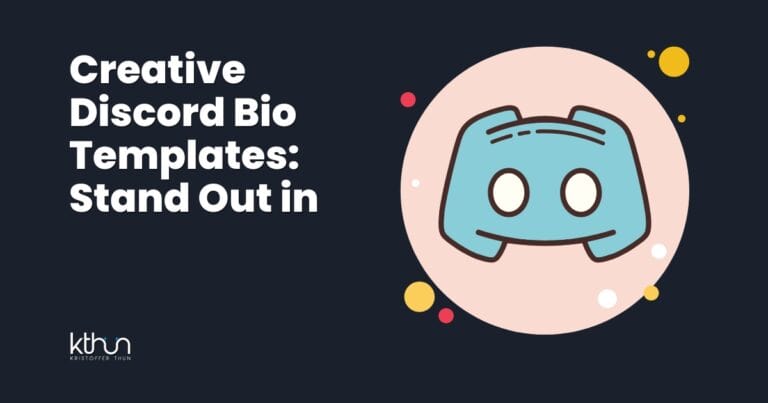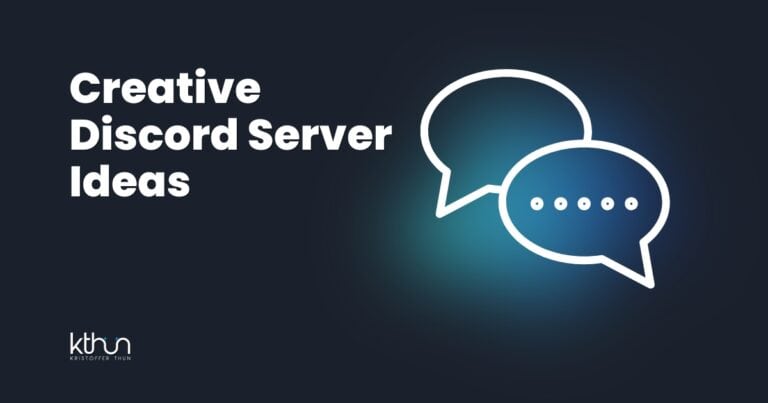Want to share your ideas with the world?
In 2022, I started creating tech content while working full-time and raising kids. No following, no advantages—just determination to build something meaningful.
I struggled with impostor syndrome and nearly quit when months passed without results or income.
What kept me going?
The desire to build something authentic that could genuinely help others.
The creator economy is booming right now. Top creators earn six-figure incomes doing what they love.
The best part? You can join them.
The path to content creation has never been more open. New AI tools make professional content possible for anyone—even complete beginners.
Think about building a community around your passions.
Picture yourself as an authority in your field. Imagine replacing your job income with creative work that feels meaningful.
This guide will show you how to become a content creator today.
You just need to take the first step.
I partner with awesome companies that offer products that help my readers achieve their goals! If you purchase through my partner links, I get paid for the referral at no additional cost! For more information, visit my disclosure page.
The Modern Content Creator Landscape: Where You Fit In

The creator economy has changed everything. What began with blogs and YouTube has grown into a massive industry.
More than 207 million people now consider themselves content creators.
Different types of creators thrive today:
| Type | Example | Platform |
|---|---|---|
| Educators | Sharing knowledge, how-tos, deep dives | Courses, YouTube, Notion, newsletters |
| Entertainers | Humor, storytelling, reaction videos | TikTok, YouTube Shorts, Twitch, AI avatars |
| Curators | Collect & comment on other content | Twitter/X threads, Substack, Pinterest |
| Builders | Documenting projects or startups, coding | IndieHackers, YouTube, Medium |
| Facilitators | Community leaders, podcast hosts | Discord, podcasting, livestreams, Skool |
AI tools have changed the game.
AI is no longer just an assistant; they are part of your content team.
Tasks that once took hours now take minutes. A solo creator can match the output of small production teams from just a few years ago.
New creators have unique advantages in 2025 and beyond. Audiences crave fresh voices and perspectives. Platforms want to promote new talent to keep their ecosystems vibrant.
Your personal brand matters more than perfect production.
Authenticity connects more deeply than polished content. This works in favor of beginners who bring genuine passion.
Every day feels more digital than the last, which might make us crave human connection even more.
Reasons You Need to Consider Becoming a Content Creator
The creator economy continues to grow fast. Analysts predict it will reach $480 billion by 2027. This growth creates room for new voices like yours.
Becoming a content creator offers several benefits:
- Financial freedom through multiple income streams.
- Personal brand growth that opens career doors.
- Creative fulfillment and self-expression.
- Community connections with like-minded people.
- Location freedom and flexible schedules.
- Professional growth through constant learning.
- Impact on others through your unique message.
Sounds pretty good, doesn’t it?
This guide provides your roadmap to navigate content creation.
You’ll learn to use AI tools while keeping your human touch. Your unique voice remains the key to standing out.
7 Steps to Becoming a Successful Content Creator
The journey to content creation success follows a clear path. Each step builds on the previous one. Follow these seven steps I learned to establish yourself as a content creator.
Here’s your roadmap to content creator success:
- Exploration & Validation
- Foundation Building
- Content Creation
- Audience Growth & Diversification
- The Monetization Phase
- Strategic Evolution
- Staying Updated and Balanced
Let’s break down each phase into clear, manageable steps.
1. Exploration & Validation

This phase involves testing ideas and gauging audience interest to refine your content vision before investing heavily in production.
It’s about embracing experimentation and learning from early feedback.
Finding your content niche starts with purpose, not platforms. Ask yourself why you want to create content.
Your answer shapes everything that follows.
The most successful creators blend market opportunity with personal passion. They find topics with audience demand that match their interests and skills.
You are your niche.
Your unique experiences make you different from everyone else. Your specific combination of interests, strengths, and perspectives creates value.
It’s about knowing who you are.
If you are fundamentally building and marketing something that is an extension of who you are, no one can compete with you on that.
Naval Ravikant
Start by listing your top five interests.
Add your top five skills. Now look for overlaps. These combinations form potential content territories.
Research audience needs within these areas. Search YouTube for similar content. Check view counts to gauge interest. Read comments to find unanswered questions.
A cooking creator might start a channel after losing 50 pounds.
Their unique angle?
Healthy comfort food that tastes good. This personal journey gives their content authenticity that no competitor can copy.
AI tools can help identify potential niches.
Tools like BuzzSumo show popular topics in your field. Google Trends reveals rising search interests. These insights guide your focus without changing your voice.
The sweet spot lies where your interests meet audience needs.
A creator who loves gardening and urban living might create content about growing food in apartments. This specific focus helps them stand out in the crowded gardening niche.
Define three to five content pillars.
These main topics form the structure of your content. A financial creator might choose investing, saving, debt reduction, and side hustles as pillars.
Create your content mission statement in one sentence.
“I help [target audience] achieve [specific goal] through [your approach].” This statement guides all your content decisions.
Your content needs staying power.
Choose topics you can discuss for years without getting bored. Passing interests make poor foundations for long-term content success.
2. Foundation Building
During this phase, you establish a solid foundation by selecting the right platforms, developing essential skills, and setting up your content infrastructure.
It’s crucial for creating a consistent and recognizable brand.
Choosing Your Platform(s)
After exploring your niche, the next critical decision is selecting which platforms will serve as your content home.
This choice should align with your content type, audience preferences, and personal strengths.
Consider these factors when choosing platforms:
- Content format: Where does your content type perform best? (Videos on YouTube, short-form on TikTok, articles on Medium, visuals on Pinterest)
- Audience location: Where does your target audience spend time online?
- Platform growth: Which platforms show potential for growth in your niche?
- Monetization options: How do different platforms allow creators to earn income?
- Your preferences: Which platforms do you enjoy using and understand well?
Many successful creators focus on one primary platform while using secondary platforms to drive traffic to their main content.
This “hub and spoke” model prevents spreading yourself too thin.
I began my journey with SEO and website, and am now working my way forward toward different content formats like video and audio.
Starting with a home base you control (like a website) provides long-term stability.
Setting Up Your Content Infrastructure
You don’t need expensive equipment to start creating content. Your existing smartphone probably shoots better video than professional cameras from a decade ago.
Use what you got and go from there.
Basic equipment for different content types includes:
- Video: Smartphone, simple tripod ($15), clip-on microphone ($30)
- Podcasting: USB microphone ($60-100), free Audacity software
- Writing: Free Google Docs, Grammarly free tier for editing, Claude, and ChatGPT
- Visual content: Canva free tier, smartphone camera
AI tools level the playing field for beginners.
Jasper helps with writing. Descript makes video editing simple through text editing. Canva’s Magic Media creates custom images from text descriptions.
Build your home base early. Secure your name on key platforms even before you post content. Create a simple website through WordPress or Carrd to own your online presence.
Set up basic analytics from the start. YouTube Studio, Google Analytics, or Instagram Insights track your growth.
These tools help you understand what works.
Create templates to speed up production. A standard video intro, blog post format, or podcast structure saves time.
These repeatable elements create consistency for your audience.
Creating Your Content Foundation
Before diving into regular content production, establish your foundational content pieces – the content that defines who you are and what value you provide.
Your content foundation should include:
- A clear introduction to who you are and what you offer (About page, channel trailer, pinned post).
- 3-5 cornerstone content pieces that showcase your expertise.
- Consistent visual branding (logos, colors, fonts) across all platforms.
- A content mission statement is visible to your audience(if you have one).
This foundation gives new visitors an immediate understanding of your content value. Unlike a traditional portfolio, these pieces serve as entry points to your creator brand.
For beginners, quality beats quantity.
Three great pieces impress more than ten average ones. AI tools can help polish your foundation pieces to professional standards.
Treat this foundation as a living framework.
As you grow and evolve, revisit and update these core elements to reflect your current direction and expertise.
3. Content Creation

In this phase, you focus on creating a sustainable content pipeline by developing a system to produce, refine, and distribute content efficiently. This involves repurposing successful content and pruning underperforming pieces.
Content creation flows better with proper planning. Random posting leads to creative blocks and inconsistency.
Try this brainstorming technique: Write down 10 questions your audience asks. Each question becomes a potential piece of content. For deeper insights, search “[your topic] + forum” to find real user questions.
Create a content calendar that works for your schedule. I use Google Sheets for my content calendar. One quality video weekly beats five rushed videos that burn you out. Be realistic about your time and energy.
Balance quality and consistency through batching.
Record several videos in one session.
Write multiple posts when inspiration strikes. This approach maintains your posting schedule during busy periods.
Best AI Tools for Beginning Content Creators
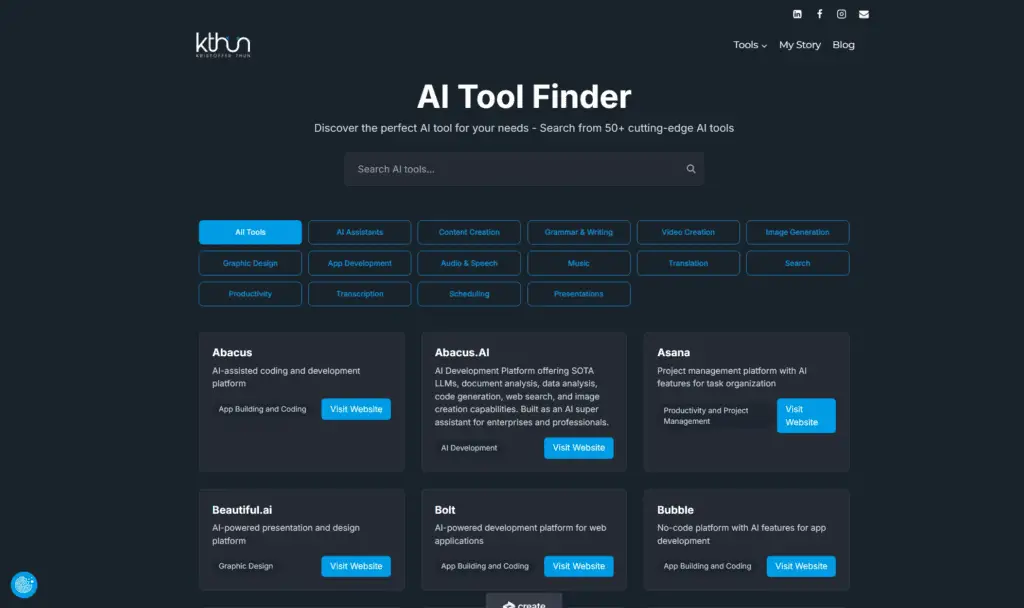
The right AI tools make content creation faster and easier without sacrificing quality. These tools help beginners compete with established creators.
Here are the essential AI tools for new content creators:
- Research and Planning Tools
- Perplexity – Research topics, generate outlines, brainstorm ideas.
- AnswerThePublic – Find questions people ask about your topic.
- Exploding Topics – Discover trending content in your niche.
- Writing and Editing Tools
- Claude or ChatGPT – Create drafts based on your ideas and outlines.
- Grammarly – Polish your writing with grammar and style suggestions.
- Hemingway Editor – Simplify complex sentences for better readability.
- Visual Content Tools
- Canva – Create professional graphics with AI assistance.
- Midjourney – Generate unique images based on text descriptions.
- Runway – Create video effects and transitions without technical skills.
- Audio and Video Tools
- Descript – Edit videos by editing text transcripts.
- ElevenLabs – Create voiceovers that sound natural.
- Cleanvoice – Remove filler words and background noise from recordings.
- Content Repurposing Tools
- Repurpose.io – Transform long-form content into short clips.
- Headlime – Create engaging headlines from your content.
- Vidyo.ai – Turn blog posts into short videos.
These tools range from free to premium options.
Start with free versions where available. Upgrade only when a tool proves valuable to your workflow.
Creating an AI-Enhanced Workflow
The secret to productive content creation lies in how you combine these tools into a seamless workflow.
Start with your unique insights and experiences. Let AI help shape and polish your ideas.
Keep your personality front and center.
A finance creator might use AI to research complex topics. They could feed this research into their personal framework.
The result?
More accurate content delivered in their authentic voice.
Maximize efficiency with this AI-enhanced daily workflow:
- Morning: Brain dump your ideas and experiences in voice notes
- Midday: Feed these notes to AI for organization and expansion
- Afternoon: Review AI output and inject your personality and stories
- Evening: Use AI editing tools to polish the final product
For repurposing content across platforms, follow this process:
- Create your main content piece (video, blog post, or podcast)
- Use AI tools to extract key points and quotes
- Generate platform-specific versions (TikTok clips, Instagram carousels, tweets)
- Add your personal touch to each version before posting
Maintain a consistent posting schedule with this approach.
AI handles the heavy lifting during busy periods. You focus on adding the human touch that makes your content unique.
Prevent burnout by setting boundaries. Decide your work hours in advance.
Take regular breaks.
Remember that sustainable creation beats short-term intensity.
4. Audience Growth & Diversification
Here, you expand your reach by mastering platform algorithms, building a community through engagement, and diversifying your audience across multiple platforms.
This phase is key to establishing a loyal following.
Growing your audience requires strategy and patience. Most creators face a slow start.
The famous “hockey stick growth” comes after consistent effort.
Each platform requires specific tactics:
- YouTube values retention and click-through rate. Create strong thumbnails and keep viewers watching longer.
- Instagram rewards engagement and regular Stories. Respond to comments and post consistently.
- TikTok focuses on hook strength and completion rate. Grab attention in the first second and keep videos short.
- Blogs depend on SEO and readability (or Search Everywhere Optimization for 2025 and beyond). Research keywords and write clear, helpful content.
Build community through genuine engagement. Reply to comments, ask questions in your content, and follow up with loyal audience members.
These connections turn viewers into advocates.
Networking With Other Creators
Strategic networking multiplies your growth potential. Other creators become your support system and promotional partners.
Connect with creators through these channels:
- Industry Discord servers where creators share tips.
- Virtual and in-person creator meetups.
- Niche hashtags on social platforms.
- Comment sections of creators in your space.
- Online courses where creators gather to learn.
Study successful creators in your niche.
Notice their content structure, posting frequency, and engagement tactics. Learn from their journey without copying their style.
AI tools can help identify potential networking opportunities. They track rising creators in your niche. They suggest collaboration ideas based on content overlap.
They draft professional outreach messages.
Using Analytics to Drive Growth
Data tells you what works. Modern analytics tools reveal clear patterns in your content performance.
Track these key metrics:
- Engagement rate (likes, comments, shares)
- Audience retention (how long people watch or read)
- Click-through rate on calls to action
- Traffic sources (where viewers find you)
- Audience demographics (age, location, interests)
AI-powered analytics go deeper than basic platform stats.
Tools like TubeBuddy analyze video performance. HypeFury tracks social media engagement patterns.
These insights guide your content strategy.
Test one variable at a time. Change your thumbnail style. Adjust your posting time. Try different content lengths and see what happens.
Measure results before making more changes.
Remember that growth takes time. Most “overnight successes” worked for years before breaking through. Stay consistent through the quiet early months.
5. The Monetization Phase
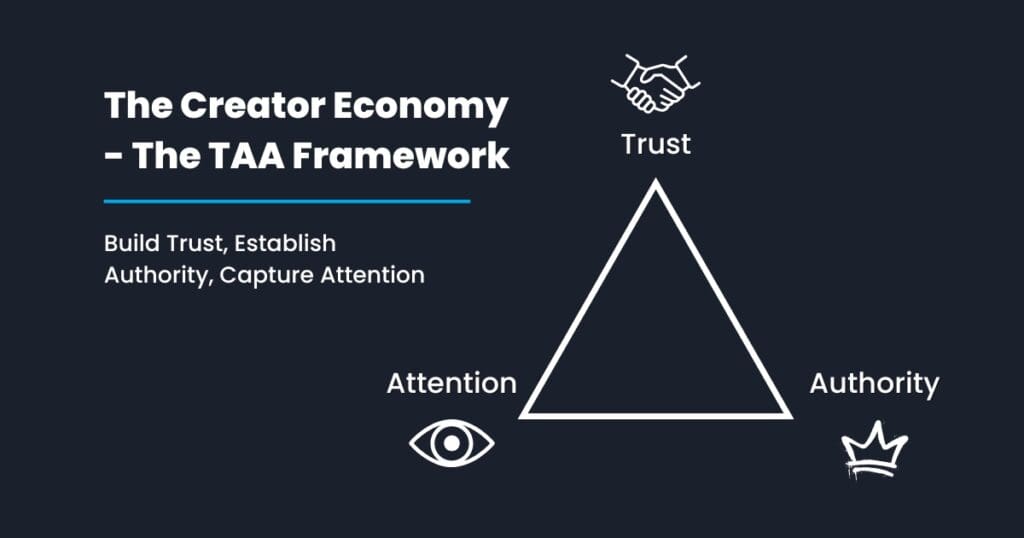
This phase involves turning your passion into profit by diversifying income streams, such as through digital products, affiliate marketing, and business creation. It’s about building a financially sustainable model that supports long-term growth.
Trust, authority, and attention are the three most important factors in a digital economy.
How to build trust?
- Be authentic and transparent (show both successes and failures).
- Deliver value for free before asking for anything in return.
- Keep your promises – no clickbait, no false advertising.
Example: Why do influencers make money? Because they have attention. Companies pay them to gain access to their audience.
Example: Why can some charge 10x more for the same service? Because they have built a strong authority. When someone think of investing what names pop up?
Focus on building genuine connections before monetization. This approach leads to sustainable income.
Most successful creators use multiple income streams:
- Ad revenue from YouTube, blogs, or podcasts.
- Affiliate marketing for products you genuinely use.
- Sponsored content with brands that match your values.
- Digital products like courses, templates, or guides.
- Membership programs for exclusive content.
- Coaching or consulting services.
- Speaking engagements and events.
- Merchandise for your biggest fans.
I have heard that you should start monetization when you have 1,000 true fans.
These dedicated followers will support your work financially. Quality matters more than quantity for monetization.
Consider this example: A creator on Patreon might earn more from 300 passionate supporters than from YouTube ads on a 50,000-subscriber channel. Their membership offers real value to their core audience.
Use AI tools to identify monetization opportunities. They analyze your content for product mention opportunities.
They generate digital product ideas based on common audience questions.
Stay authentic through monetization. Promote only products you would recommend to friends. Create sponsored content that provides genuine value.
Your audience trusts you because of your honesty.
6. Strategic Evolution
In this final phase, you transition from being a solo creator to building a scalable business or media entity. This involves creating systems that generate income independently of your direct involvement, ensuring long-term success and legacy.
Once you establish consistent creation, consider scaling your impact. This growth requires systems and possibly team members.
Scaling Your Content Creation Business
Document your processes in detail.
Create templates for every recurring task. These systems prepare you for delegation or hiring help.
Expand into new content formats based on audience feedback. A successful blogger might add a podcast.
A YouTube creator might launch a newsletter. Meet your audience where they spend time.
Develop premium offers when your free content proves valuable. Online courses, coaching packages, or exclusive communities generate higher revenue per customer.
Advanced AI tools enable more sophisticated content.
Tools like Runway generate custom video effects. ElevenLabs creates realistic voiceovers. These technologies help small creators compete with bigger productions.
Strategic partnerships amplify your reach. Look for brands that share your values and audience.
These relationships provide both income and exposure.
Alternatives to Independent Content Creation
Independent creation isn’t the only path.
Consider these alternatives:
- Join established brands as their content specialist
- Apply for creator programs like YouTube NextUp
- Partner with content networks that handle business aspects
- Combine employment with personal content creation
- Join creator collectives for shared resources and promotion
What I learned is that many successful creators started with hybrid approaches.
They created content while holding day jobs. They joined networks before going independent. These paths reduce risk while building skills.
The YouTube Creator Program provides resources and training to selected creators. Similar programs exist on most major platforms.
These opportunities offer valuable guidance and promotion.
7. Staying Updated and Balanced
Creating content for the long term requires staying current with trends while maintaining balance and authenticity in your work.
This phase focuses on sustainability and continued growth.
Stay Updated With Industry Trends

The content landscape changes quickly. Creators who stay current remain relevant longer.
Follow trends through these sources:
- Industry newsletters from platforms you use
- Creator economy podcasts and YouTube channels
- Annual reports from social media platforms
- Content marketing blogs and research
- AI-powered trend prediction tools
Use AI tools to monitor trending topics in your niche.
BuzzSumo identifies popular content types. Exploding Topics spots rising keywords early. These insights help you ride trends before they peak.
Balance trendy and evergreen content.
Trends bring short-term views. Evergreen content builds lasting traffic. Aim for 70% evergreen and 30% trend-based content.
Balance AI Productivity and Authenticity
AI tools boost productivity without sacrificing your unique voice. The key lies in how you use them.
Think of AI as your production assistant:
- Let AI handle research and data collection.
- Use AI to organize your thoughts and create outlines (like Notion or Kortex).
- Have AI edit your work for clarity and grammar.
- Let AI suggest improvements while keeping final decisions.
Your unique experiences and perspectives remain the core value.
AI simply helps package these insights more effectively.
Many top creators use AI behind the scenes. They maintain authenticity by focusing AI on technical tasks. They keep creative direction and personal stories fully human.
Consider ethical AI usage in your workflow.
Disclose AI assistance when appropriate. Use AI to enhance your ideas, not replace your voice. The tools should support your creativity, not substitute for it.
My Personal Experience
Starting as a creator was tough while balancing life as a father with a full-time job. The demands felt overwhelming at times.
The key was taking small steps each day. I committed to creating something, even something tiny, every single day.
Being a content creator requires discipline and consistency.
My journey has plenty of ups and downs. Some days feel inspired. Other days feel impossible.
What keeps me going is seeing gradual progress.
I use several AI tools to speed up my process and stay effective.
These tools handle the time-consuming parts so I can focus on the creative elements I enjoy.
The best part?
I remain completely myself. The AI supports my voice rather than replacing it.
My struggles and solutions might mirror your own journey. Remember that even established creators face similar challenges.
The difference lies in developing systems that work with your life, not against it.
Maintaining Creator Wellbeing
Mental health matters in content creation. Public sharing invites criticism. Build resilience through support networks.
I recommend taking breaks when needed. Remember that online metrics don’t define your worth.
Your Content Creation Journey: Beyond the Guide
Creating content isn’t just about building an audience or generating income.
It’s about finding your voice in a noisy world and using it to create meaningful connections.
Every piece of content you create is a conversation with someone you may never meet, but whose life you might change.
That responsibility – and opportunity – is what makes this journey worthwhile.
The path won’t always be clear.
There will be days when the words don’t flow, when the algorithm seems against you, when doubt creeps in.
On those days, remember why you started.
Your story matters. Your perspective is needed. Your content – imperfect as it may be – could be exactly what someone needs right now.
So start today.
Not when you feel ready (you never will). Not when conditions are perfect (they never are).
The world is waiting for your voice.
What will you create first?
FAQ: 7 Ways to Become a Content Creator
How do I find my content creator niche if I have multiple interests?
Look for overlap between your interests, skills, and market demand. Start by listing your top passions and strengths, then research which combinations have audience interest but aren’t oversaturated. The sweet spot is where your unique perspective meets genuine audience needs.
What equipment do I actually need to start creating content?
Start with what you have. A smartphone, free editing apps, and basic lighting are enough for most beginners. For videos, add a $15-30 microphone for better audio. Upgrade only when your content quality is limited by equipment, not your skills.
How can I use AI tools without losing my authentic voice?
Use AI for research, outlining, and editing—not generating your core ideas. Always start with your unique insights and experiences, then let AI help refine and polish. Review all AI output and inject your personality before publishing.
How long does it typically take to grow an audience as a new content creator?
Most successful creators see minimal growth for 6-12 months before momentum builds. Focus on consistency and improvement rather than metrics early on. Create valuable content regularly, engage with your community, and analyze what resonates with your audience.
What’s the best way to monetize content when starting out?
Build trust first, monetize second. Start with low-friction options like affiliate marketing for products you genuinely use. As you grow, add digital products that solve specific problems for your audience. Focus on serving your “true fans” rather than chasing mass appeal.


